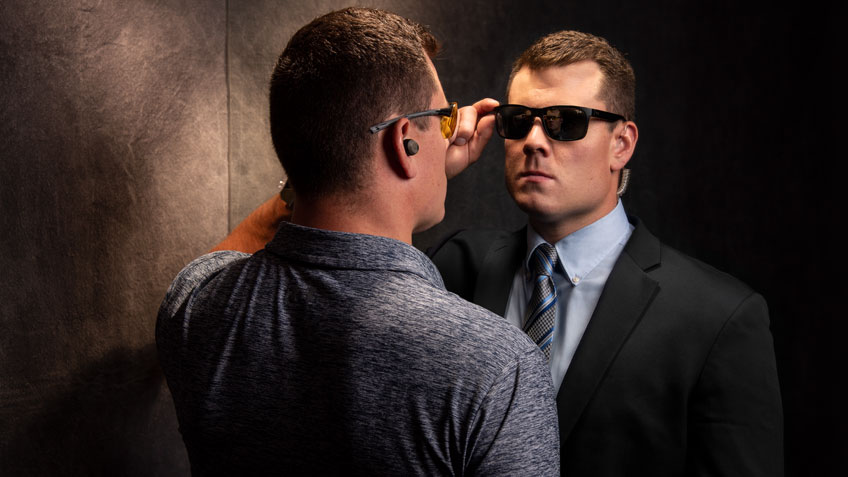
I believe we are living in exciting times. Yes, there is quite a bit of division across our great land, but there is also much unity. The more individuals make their personal safety their own responsibility, the more we will see our landscape change. The change is for the better and will encourage more self-reliance. We are a proud country, and individualism is a central part of that pride. I’m grateful to be living in these exciting times, as I have a part in shaping our future, albeit a very small part. I have the privilege of educating the public on many things related to personal defense and I take this responsibility seriously. I don’t have all the answers, but I have amassed a great deal of experience, which is part of the reason I get asked a lot of questions. However, I don’t believe what is best for me is the best for everyone.
This frustrates people sometimes, because many are looking for a simple answer without doing the work. They want the best handgun, holster or ammunition for self-defense. Or, they want to know the shortcuts or easy road. Our reality in the personal-defense world is we don’t know when bad things are going to happen—we are training for the unknowable. This is reflected in many facets of our lives. We carry home insurance to cover our home and its belongings, just in case. We have fire alarms in our kitchens, just in case. We choose to carry a handgun, just in case. The central idea of all of these assurances is safety; to be able to go about our daily lives as safely as possible.
Of course, none of these measures eliminate the possibility of bad things happening; they help to mitigate the negative outcome. When I get asked these questions, I enjoy engaging in conversation to help others understand my reasoning, my “why.” I also walk a fine line between my responsibility to the individual and my responsibility to the public. Some techniques, tactics or equipment are advanced and complicated, requiring more competency. Whether we like it or not, it comes down to skill level. If I’m suggesting a technique or tactic, it is my responsibility to do so within the safe competency of the individual. So, how do we break the ice to talk about competency? Often times this conversation is awkward because there can be feelings involved. To help, I suggest you be honest with yourself.
This may seem like an odd question, but bear with me. Let’s say you have decided to hire a bodyguard for your personal defense. Have you considered your selection process? This person will bear the responsibility of keeping safe your loved ones. I’m sure you want them to have a minimum level of skill and competence to do their job. In fact, I’d bet you would want them to be an elite bodyguard, someone on the level of a Frank Farmer or (for the modern audience) a John Wick. Now, stop to consider this hypothetical scenario. Would you hire yourself to protect your family with your current skill level? Does this help sway you that maybe you should invest more into your training and education? That maybe your current level of skill and competency is lower than you are comfortable with to protect your loved ones?

When we start talking about competency skill level with a handgun from concealment, my experience has taught me there are three main levels. Rather than use labels, I describe them through the training and education hours invested on an annual basis. These are broken down into actual hands-on, formal instruction obtained in a calendar year. While research through mediums such as books, videos and practice are excellent, they are not a substitute for formal instruction from a qualified instructor. I also understand there are many barriers to training and education. For more on how to overcome some of these barriers, read this previous article I wrote for Shooting Illustrated. The first level of competency is 1 to 6 hours of formal instruction, the next level is 12-plus hours and lastly, 40-plus hours. I can see a significant difference between students at these various levels.
As my career as a nationally recognized instructor evolves, I have come to appreciate the complexity of this art form. I would love to snap my fingers or pass my knowledge through osmosis, but we all know it takes hard work. I consider the biggest win to your formalized instruction to be the first level; 1 to 6 hours. I consider it a huge accomplishment for someone to take the first step toward obtaining their concealed-carry license by attending the state-mandated course. Every state is different, but most involve classroom and proficiency demonstration. Six hours is the minimum requirement for my home state of Texas, so this represents the first level. While each state’s licensing is different, it really doesn’t matter. This first level is based around an annual accumulation of 1 to 6 hours of formal instruction. So, once you have your license, what’s next?
There are many excellent opportunities with minimum impact or a low barrier to entry. Some examples would be attending a local-instructor-led NRA Basic Pistol course. You cannot review the basics enough. Some may shun these lower-level classes, but these offer more in the sense of sustainability over the long haul. If this is the best you can do because of your situation, it’s an excellent choice and definitely beats the alternative of not doing anything. There are other subjects to consider. Rather than restrict the formal instruction to firearms only, I elect to branch out. If you want to continue your education, but in a different field, then go for it. Maybe you want to obtain some medical training or even take a dynamic-driving course. The object is to improve your competency to protect your family. Carrying a handgun is a major advance toward this objective, but one of many.
I put a lot of stock in families who train together. I think it is hugely valuable and this is one area you can turn into a family outing or even family bonding. If the family buys into the idea of continued education, it makes it so much easier to make this a lifelong-learning process—and that is the ticket to winning, in my opinion. If you can sit down and invest up to 6 hours every year, imagine where you would be in 3, 5 or even 10 years. It is never too late to start, nor is it bad you only are getting 6 hours per year. I will take this over the one-and-done after a so-called advanced class you attended once. Remember, this is a marathon, start early and develop the six-hour habit now.
There will be many who are happy with the first level. There will also be plenty who can only afford, through time, talent or treasure, the 6 hours per year. Some will be interested in gaining more knowledge. They will recognize there is so much they don’t know and have discovered a thirst for knowledge. This group is made up of all different backgrounds, but one common trait is recognizing there is so much they don’t know. Getting 12-plus hours a year usually means venturing into a multi-day training class. These classes offer an immersion into the art, almost as if you are drinking from a firehose, but the nectar is delicious. Even getting multiple one-day classes through the year is a great way of spreading the wealth as well as managing your resources; time, talent and treasure.
What I enjoy about this group is their ability to see the gains, the fruits of their labor. Their skill level is improving and eventually they reach a plateau. Some will see this plateau as a bad thing, I see it just the opposite. Being on this plateau has a lot to do with understanding your skill, meaning you know your strengths and weaknesses. The problem is we typically don’t do as much work as we should on our weaknesses. Many students in this group make excellent companions for range trips. I feel it is great to work with people who are better than you. As the saying goes, if you are the smartest person in the room, you are in the wrong room. Camaraderie and a sense of belonging are incredibly valuable. It shows we are a community and we help each other out.

That leads us to the last level, the 40-plus hour level. This level is reserved for what one might consider a professional student or up-and-coming instructor. The time commitment alone puts this out of reach for most people, and that is okay. Those who are working to achieve in excess of 40 hours annually also make up the career professionals, such as those who in the performance of their duties must carry a handgun. Most of the time it requires attending much of these hours on your own, outside of officially sanctioned events, and I do not consider “qualification” as formalized instruction. When I mentioned plateaus previously, students in this group are aware of their limits and actively working to improve upon them.
A major distinction in this group is those who work at what they are terrible at, versus those who work at what they do well only. This group is difficult to gain admission into for obvious reasons, but their skill level is beyond impressive. At a certain point you become self-aware, meaning you recognize not only are you doing something wrong, but why. The 12-plus-hour group gets to a point where they may not know exactly how to do it right all the time, but they know when they do it wrong. At some point, this self-awareness brings you full circle to the realization that the time you must invest is no longer a burden. You have developed your skill to the point your maintenance strategies keep your skills honed to a fine edge.
Each of these groups is prestigious in their own right. From a practical point of view, no one is better than the other. If the object was to achieve more-formal instruction on a consistent basis, then all these levels easily meet this objective. I don’t want people to walk away with a feeling of inadequacy, either. I would much rather have a student who is getting 1 to 6 hours per year over someone who is all over the map. The idea you have to progress to the next level is also one I want to debunk. If you have as a goal skill improvement, then any of these levels is a win. If your best is committing to a couple of hours a year, but you can do that for 5 or even 10 years, that is a huge win. Don’t downplay the role this has on improving your skills over time. Sure, you might be able to fast-track this by doing a couple of 40-plus-hour years. It doesn’t mean it suits you best to stay at that level over the long haul.
There is much to be gained from this approach and it in no way paints people into a corner. This is your journey; who’s to say your path is better or worse than someone else’s? If you are new to this activity, enjoy the novelty with minor gains by subscribing to 1 to 6 hours per year. If you are putting in 12-plus hours, your skill level is definitely improving as you continue to hone the edge. Once you start putting in 40-plus hours a year, you realize how little you really know or, put another way, how much you are learning about yourself. In any case, the outcome is the same; you have invested time, effort and treasure into providing for the safety of yourself and loved ones, which is all that matters.





































